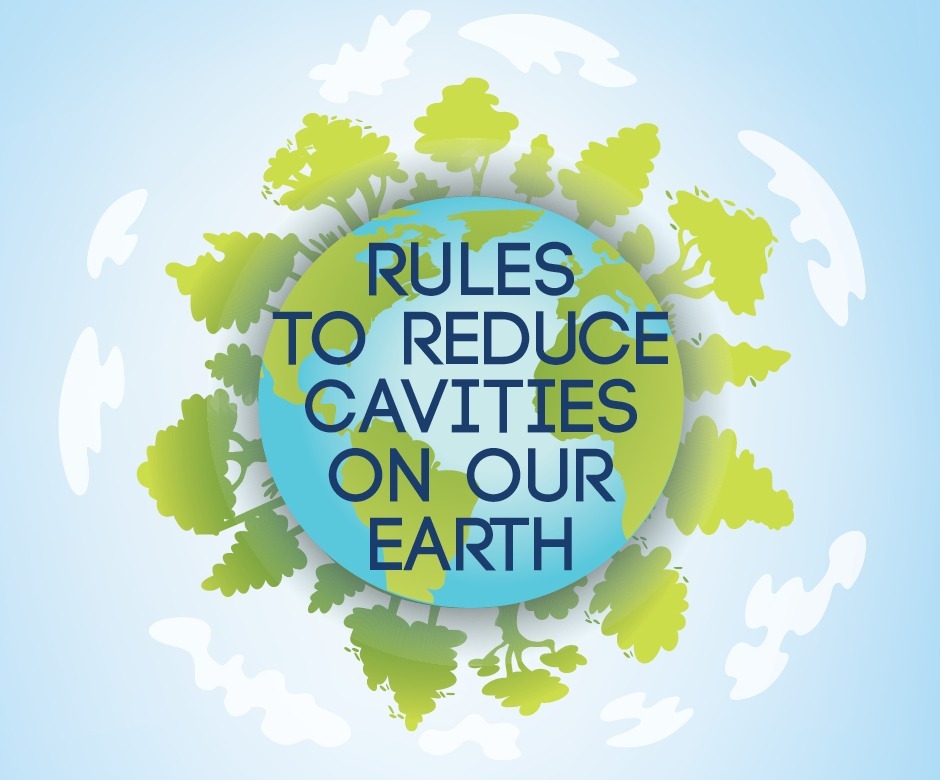Each day we focus on conquering tooth decay. The morning huddle is where we begin to acclimate the team and set expectations.
Who are we treating today? What treatments are we performing?
The operatories are organized and prepped in advance to welcome the day’s patients. The ultrasonic is filled. The autoclave has started. The lights and equipment are on, and the thermostat has been changed three times already.
With all this preparation, has anyone given a thought about the decay and decomposition about to be dumped upon the Earth?
Patient care will always be our first priority. However, regardless if it is a simple prophylaxis or a complex surgery, prioritizing sustainability does more than benefit the planet, it benefits patient health. How can we make dentistry more environmentally friendly? It is not difficult to make a difference.
Five areas that can be addressed easily:
1. REDUCE ENERGY WASTE
There are easy ways to reduce energy consumption and costs inside the dental practice. Switching to LED bulbs will save 75% electricity, compared to incandescent bulbs. They last 25 times longer and contain no mercury. Turn the lights off when not in use. Use motion sensors and timers to eliminate illuminating unoccupied space. Unplug idle electronics: breakroom coffee pots, microwaves, curing lights, and autoclaves. Plugging these items into a power strip and turning them off when done is a simple, yet effective, way of reducing energy waste.
2. BE DIGITAL
Paperless dentistry is the new normal, and there are many benefits to the digital world.
A virtual office system not only reduces cross contamination but reduces our carbon footprint. Making paper requires trees, water, and machinery. This waste can be eliminated by simply utilizing computers in the office. From billing to patient charting and radiography, working digital reduces the need for not only paper, but also chemicals used to copy information and develop x-rays. Increased efficiency is also a huge perk with digitized patient data. All patient information is found in one portal that can be accessed by all computers in the office.
Computers consume the most energy in the practice. During office hours, allow computers to go into sleep mode when not in use. When leaving for the day, opting to shut down completely versus using a screensaver will reduce energy waste. If, however, your IT company requests computers remain on during non-working hours, turn off monitors to eliminate screensaver mode.
3. PROCEDURE PREPARATIONS
“By failing to prepare, you are preparing to fail” is a famous quote by Benjamin Franklin and speaks truth about practicing sustainability. Consciously reducing dental waste should be a priority within your practice. Preparedness for your next patient and procedure will greatly reduce unrecyclable, non-biodegradable items. Glove usage contributes to the majority of dental waste in landfills. How many times a day are you changing gloves? How about your auxiliary team? This is not referring to necessary glove changes. How many times are gloves changed unnecessarily, due to unpreparedness? The handpieces were not on the tray; fluoride was forgotten in the drawer; not enough anesthetic was set out; saliva ejectors were not restocked. Scissors are always needed for crown procedures, yet frequently forgotten. Can you relate to this scenario?
Encourage team members to create a procedural checklist with photographs of the items needed for each procedure. When it is time for treatment, your focus is on the patient, eliminating the need to re-glove to obtain more items.
4. REDUCING PLASTIC WASTE
Let’s go naked. Ever notice how many items are covered with plastic, yet still require the removal of a barrier and disinfection anyway? Noncritical patient care items, such as chairs and radiograph head/cone, do not require plastic barriers. Clinical contact surfaces such as light handles, trays, and computer equipment may be cleaned and disinfected without covering them in unnecessary plastic. Hand sanitation is the first step in reducing the transfer of microorganisms, but cleaning followed by disinfection with an EPA-registered hospital disinfectant is adequate. Reduce plastic waste by allowing some equipment to go naked.
5. RAISE AWARENESS AMONGST TEAM MEMBERS AND PATIENTS
There are plenty of reasons to have a green dental practice, including increased employee morale and more confident, loyal patients. First, create an environmental mission statement, and display it for employees and patients to see. Next, set aside time at staff meetings to discuss your green efforts. Designate a team leader as the Green Team Liaison. Finally, keep patients informed about your green efforts by including updates in newsletters and social media posts. Sustainability is a current issue; and utilizing it for marketing awareness is a win-win situation for you, your patients, and the planet.
Adopting policies and practices with an eye on greater sustainability is the future of environmentally responsible dentistry. A few simple considerations will contribute to an improved environment and become a point of pride for your business. So, the next time you walk into your dental practice, will you be supporting healthy people living on a healthy planet?

Lynda Sherman, CDA, EFDA is a writer, speaker, consultant, and a clinician for the dental profession. She is the founder of the nonprofit organization, The Dental Oral Care Project, the owner and consultant with EcoSmiles Dentistry, and the owner of the eco-friendly dental subscription box, Get Mouthy.
FMI: Email at lyndaefda@gmail.com or www.lyndasherman.com.

